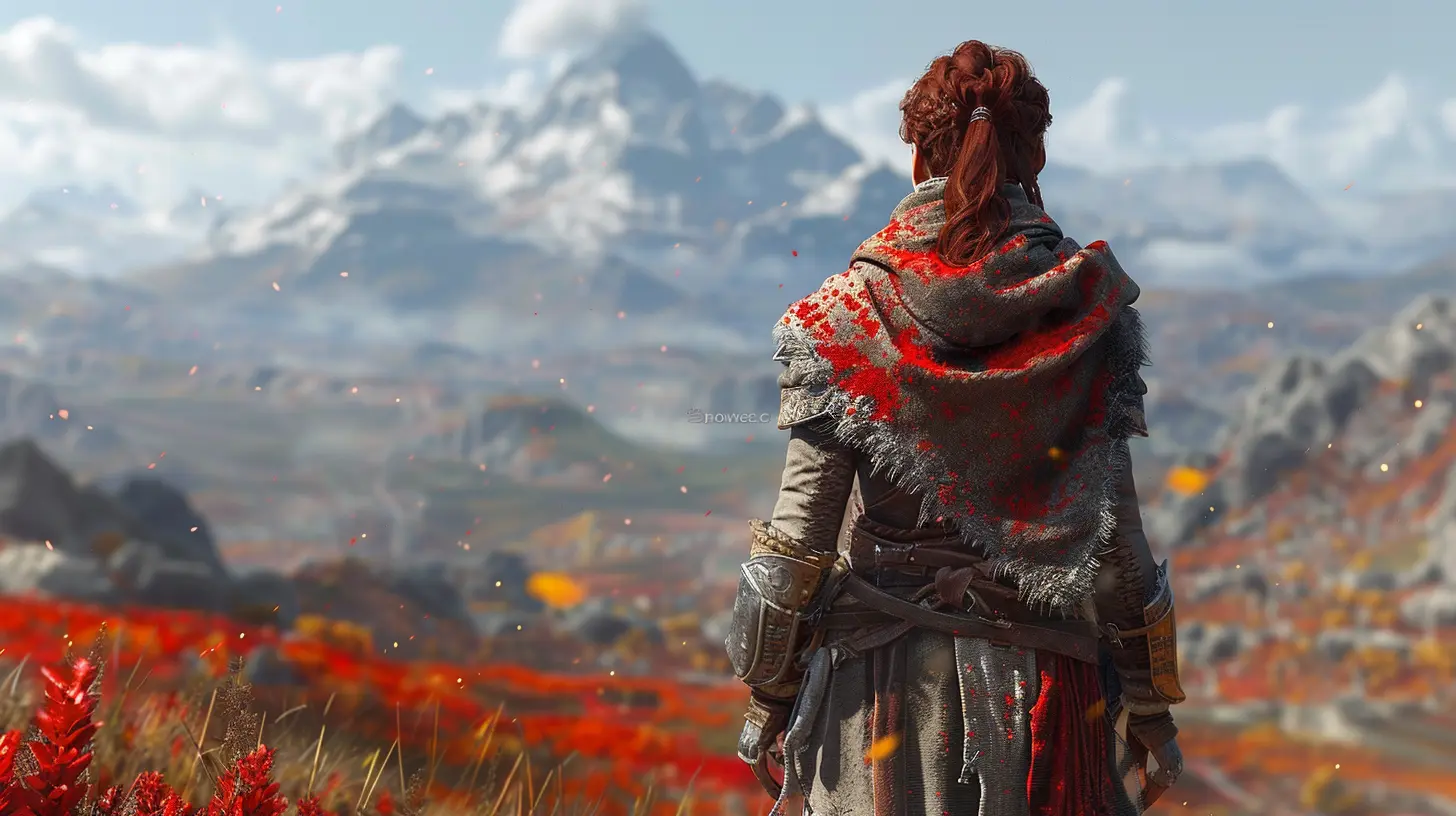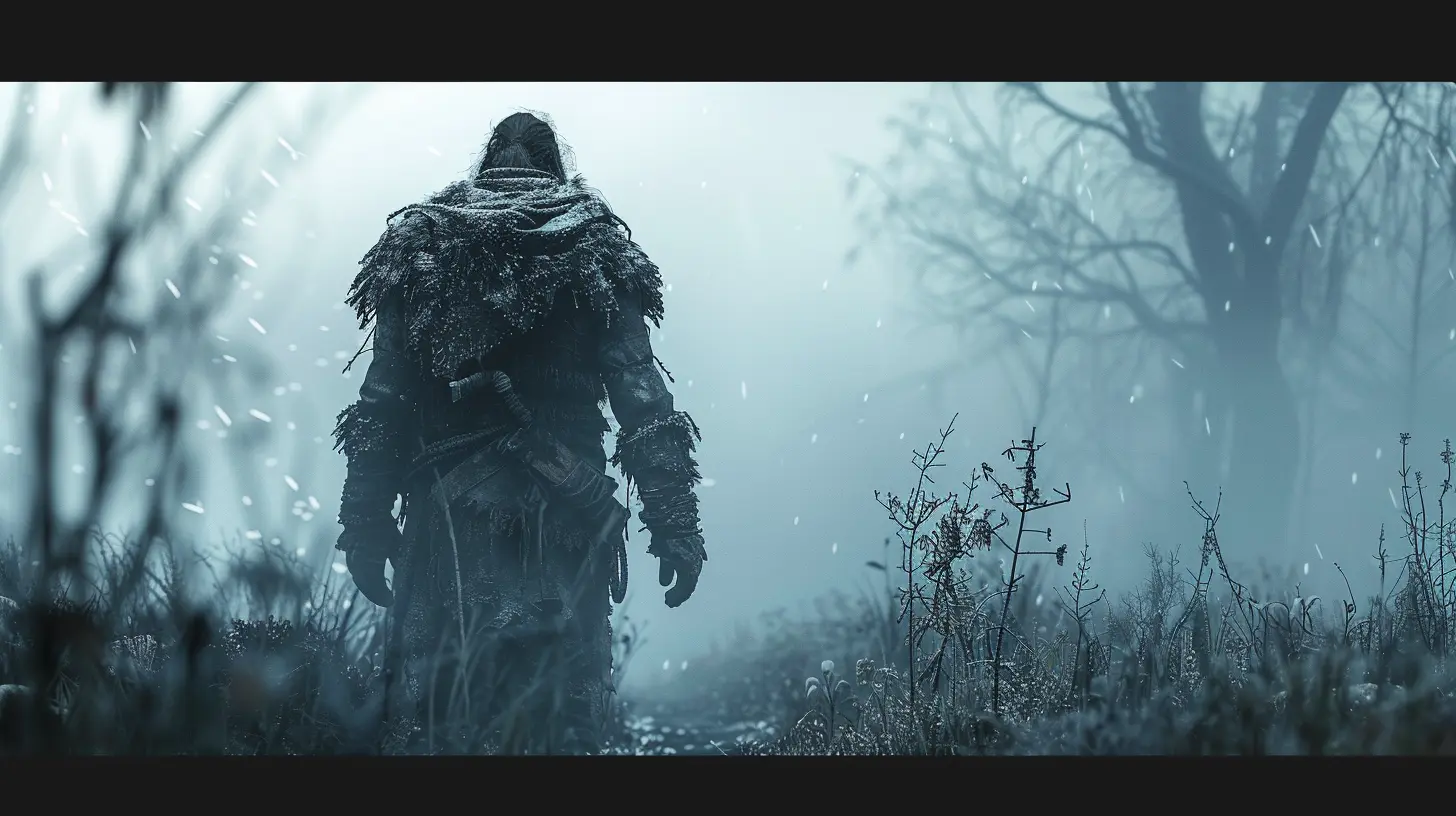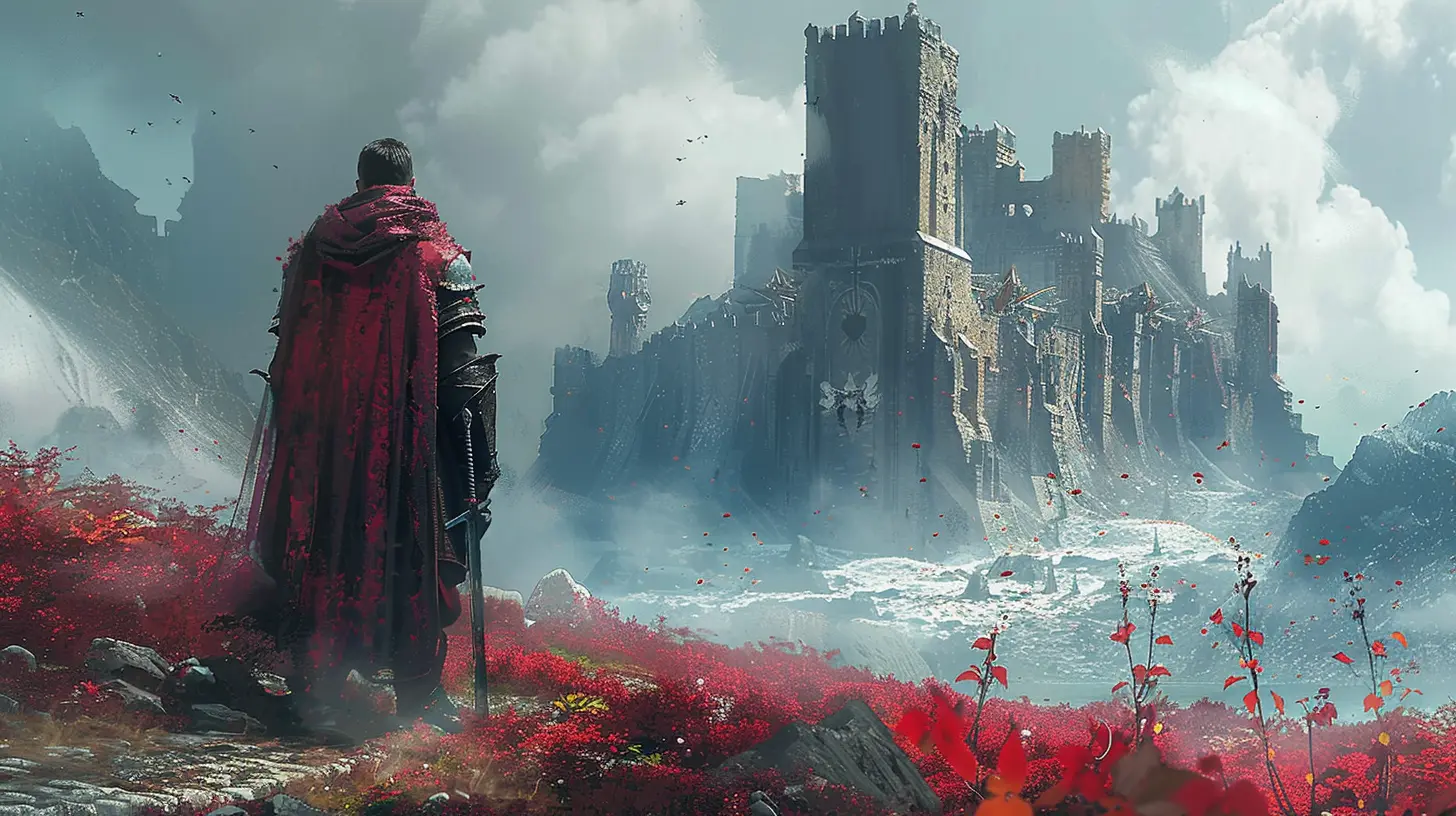The Fine Line Between Customization and Overwhelm: Avoiding Choice Paralysis
4 February 2025
Have you ever walked into a sandwich shop, stared at the endless list of toppings, proteins, and sauces, and had absolutely no idea where to start? You wanted something delicious, but instead, you ended up stressed over picking the "perfect" combo. Weirdly enough, this same chaos exists in gaming, especially when it comes to customization. The idea of getting to tweak every little detail in a game sounds amazing—until it’s not. Before you know it, you’re stuck in analysis paralysis, spending more time second-guessing your choices than actually enjoying the game.
Today, we’re going to take a deep dive into the wild world of game customization, where creativity meets chaos. Let’s figure out how to avoid feeling overwhelmed by options and keep the experience fun and engaging. Ready? Let’s go.
Why Customization Matters (And Why We Love It)
First off, let’s talk about why customization in games is such a big deal. It’s not just about picking cool outfits or color schemes—though that’s definitely part of it. It’s about making the game feel personal. Gamers love the idea of molding a character, a vehicle, or even an entire world into something that feels uniquely theirs. It’s like saying, "This is my mark on this universe."Think about games like The Sims, where your creativity runs wild, or RPGs like Elden Ring, where you can fine-tune everything from your character's hairstyle to their weapon build. Customization taps into our need for self-expression. It lets us feel like we’re not just players; we’re creators.
But here’s the kicker: with great customization comes great responsibility (and sometimes a headache).
The Rise of Overchoice in Modern Gaming
Let’s be real: game developers love throwing options at us. And why wouldn’t they? The more features, sliders, and variables a game has, the more "immersive" it seems. But somewhere along the way, this variety becomes a double-edged sword. Instead of enhancing the experience, it can bog us down.There’s even a term for this: choice paralysis. It’s what happens when we face so many options that making a decision feels impossible. Sound familiar? It’s like opening Netflix, scrolling through endless movies for 30 minutes, and then just rewatching The Office.
In gaming, overchoice might look like:
- Spending hours tweaking a character’s facial features so they don’t accidentally look like an alien.
- Having 50 weapon skins to choose from and still using the default one because it’s "safe."
- Avoiding upgrades in skill trees because you don’t want to accidentally choose something “wrong.”
The problem is, instead of creating joy, these moments create anxiety. Nobody wants to feel like they screwed something up before the game even starts.
Where Game Developers Cross the Line
Alright, let’s not throw shade at game devs too hard—they’re just trying to make games awesome for us. But sometimes, they overshoot their mark. Here’s where things can go sideways:1. Too Many Options, Too Soon
Starting a game and being dumped into a massive character creator right away can feel intimidating. You just want to play, but instead, you’re stuck picking eyebrow thickness and cheekbone angles for a character you barely know. It’s like being asked to decorate a house before you’ve even moved in.2. Overly Complex Systems
Some games have customization systems so intricate that they might as well come with an instruction manual. Take skill trees, for instance. If you need a spreadsheet to figure out which skills to invest in, it’s gone too far.3. No Way to Undo Choices
Ever commit to a skill, weapon, or aesthetic choice in a game, and then find yourself regretting it 10 hours later? Yeah, that stings. Games without respec options or “undo buttons” can turn experimentation into a high-stakes gamble.
How to Avoid Getting Overwhelmed by Customization
So, how do we stay on the fun side of customization without tipping into overwhelming territory? Here are some strategies that can help:1. Start Simple
Don’t feel like you have to customize EVERYTHING right away. A lot of games let you jump in with default settings and tweak things later. Take advantage of that! Start playing, get a feel for what you want, and then fine-tune as you go.2. Set Time Limits
If you’re the type to obsess over every detail (no judgment, we’ve all been there), give yourself a time limit. Say, “Okay, I’ll spend 15 minutes customizing my character, and then I’m moving on.” This keeps you from getting stuck in a decision loop.3. Stick to What Feels Right
Sometimes, your gut knows best. Don’t overthink it—if you like how something looks or feels, go with it. Remember, it’s your game experience. There’s no “right” or “wrong” way to play.4. Embrace Mistakes
Here’s a secret: not every choice has to be perfect. Some of the most memorable gaming moments come from unexpected decisions. So what if your character ends up with a weird hairstyle or you pick an underpowered skill? Roll with it—you might just surprise yourself.5. Look for Quality-of-Life Features
Before diving into a super-customizable game, check if it includes features like presets, respec options, or the ability to save customization templates. These tools can make experimentation a lot less nerve-wracking.When Customization Gets It Right
Not all hope is lost! Some games nail customization by keeping it fun and manageable. Here’s how they do it:1. Guided Choices
Instead of dumping everything on you at once, good games ease you in. For example, Horizon Zero Dawn introduces weapon upgrades gradually, so you’re never overwhelmed by choices.2. Presets That Shine
Games with pre-made customization options (that actually look great!) are lifesavers. You can always go back and tweak things later, but those presets let you hit the ground running.3. Freedom to Experiment
Titles like Cyberpunk 2077 allow you to edit your character’s appearance mid-game. This takes the pressure off your initial decisions—you can always change things as you go.The Balance Between Freedom and Focus
At its core, the line between customization and overwhelm boils down to balance. Too little choice, and a game can feel restrictive. Too much, and it becomes a chore. The sweet spot is somewhere in the middle—enough options to feel empowering, but not so many that you’re paralyzed.As gamers, it’s okay to skip some of the fluff and focus on what makes you happy. And for developers, it’s about creating systems that feel approachable, intuitive, and rewarding. When both sides nail that balance, customization becomes the magical feature it’s meant to be.
Final Thoughts: Don’t Let Options Steal the Fun
Here’s the thing: gaming is supposed to be fun, not stressful. Customization should make your experience better, not leave you feeling like a stressed-out parent on picture day. So the next time you find yourself lost in a sea of sliders, stats, or choices, take a breath. Remember, it’s your game, your rules. Go for what feels right and let the rest fall into place.And if all else fails? Hit that “randomize” button and let fate decide. Sometimes, chaos is the best choice of all.
all images in this post were generated using AI tools
Category:
Character CustomizationAuthor:

Tayla Warner
Discussion
rate this article
8 comments
Isaac Bellamy
Embrace creativity in games; a balanced choice leads to joy!
March 30, 2025 at 3:33 PM

Tayla Warner
Thank you! Striking the right balance between creativity and simplicity can truly enhance the gaming experience.
Paris McNeal
Great insights on the balance between providing options and maintaining player enjoyment! It's crucial for developers to streamline choices to enhance the gaming experience without overwhelming players. Looking forward to seeing how this evolves in future titles.
March 4, 2025 at 4:31 PM

Tayla Warner
Thank you! I appreciate your thoughts and am excited to see how developers tackle this challenge in future games.
Derek Marks
Customization enhances player identity, yet too many choices can stifle creativity. Striking a balance is essential for an engaging gaming experience.
February 27, 2025 at 3:28 AM

Tayla Warner
Thank you for your insight! I agree that finding the right balance between customization and simplicity is crucial to foster creativity without overwhelming players.
Farrah McTigue
This article brilliantly highlights the struggle between freedom in customization and the anxiety of too many choices. Great read!
February 22, 2025 at 5:00 PM

Tayla Warner
Thank you! I'm glad you found the article insightful. Striking that balance is crucial!
Zephyrae Kirkpatrick
Great insights! Balancing customization options while preventing choice paralysis is crucial for player engagement. Game developers could consider introducing guided tutorials or pre-set templates to help players navigate complex choices without feeling overwhelmed, ensuring a more enjoyable gaming experience. Keep up the great work!
February 21, 2025 at 5:25 AM

Tayla Warner
Thank you for your thoughtful comment! I completely agree that guided tutorials and pre-set templates can significantly enhance player engagement by simplifying complex choices. Your insights are much appreciated!
Helen Campbell
In a world where choices multiply endlessly, beware the alluring abyss of customization. Will you carve your own path or get lost in the labyrinth of options? The power to create can also bind. Choose wisely.
February 19, 2025 at 5:25 PM

Tayla Warner
Thank you for highlighting this crucial dilemma! Balancing customization with clarity is key to empowering creativity without overwhelming the mind. Choose intentionally!
Quorra Alvarez
Customization in games is like a buffet: it starts off exciting, but before you know it, you’re sweating over whether to pick the spicy dragon wings or the mild enchanted carrots. Just remember: sometimes less is more—especially if you’re a picky eater!
February 15, 2025 at 4:05 AM

Tayla Warner
Great analogy! Balancing options in customization can indeed lead to choice paralysis. Embracing simplicity can enhance the gaming experience.
Maggie Hurst
Customization empowers players, but too many options can stifle creativity and enjoyment. Embrace the art of balance—curate choices that spark inspiration rather than confusion. Let's celebrate design that enhances gameplay without overwhelming us, creating a rich tapestry where every decision feels meaningful and exhilarating. Game on!
February 14, 2025 at 6:03 PM

Tayla Warner
Thank you for your insightful comment! Striking that balance between customization and simplicity is indeed crucial for enhancing player experience and fostering creativity. We appreciate your perspective on creating meaningful choices that inspire. Game on!
MORE POSTS

Casting for Success: Choosing the Right Voice Actor for Characters

Creating Immersive Worlds with Unity Terrain Tools

The Secret Power of Journals and Notes in Game Lore

Gaming Hardware Wars: The Latest Tech Upgrades You Need to Know

How to Max Out Your Skills in Skyrim with This Walkthrough
Iconic Game Franchise Announces Cross-Media Collaboration